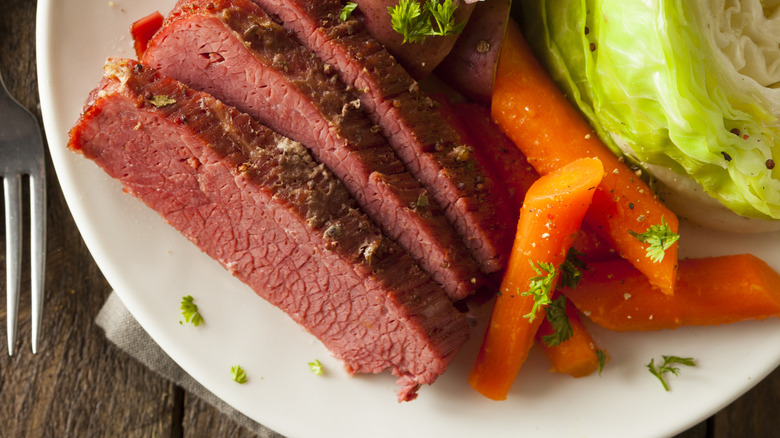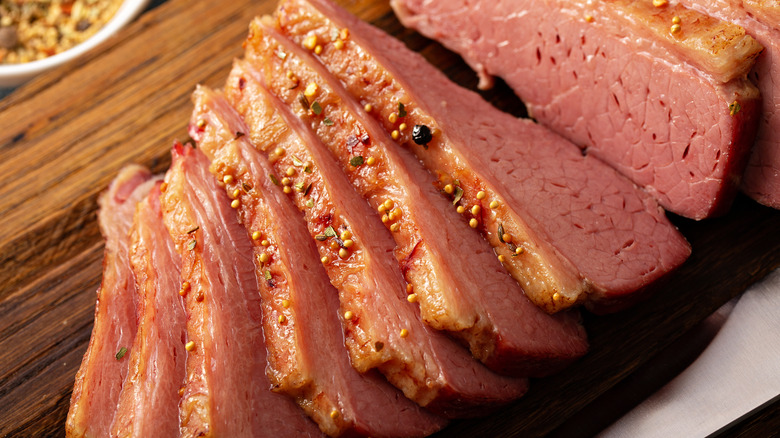How You Should Be Slicing Corned Beef
Corned beef is a classic Irish-American dish that takes center stage every St. Patrick's Day. But there's no reason to save this dish for just March. This delicious dish should have a place at the dinner table all year long and can make for a fun project to make from scratch at home.
Corned beef takes its name from its long brining process. According to Masterclass, "corn" was a British term for the large salt crystals used in the brine. Those crystals, combined with sodium nitrite for preservation, are the base of the brine. But it's easy and fun to customize the rest of the spices that can bring flavor to your meal (via Cook's Illustrated). Because it is typically made with a cut of beef brisket, it does take some careful handling to keep the meat tender. According to The Kitchn, corned beef takes a low and slow cooking time to keep from toughening up too much. They recommend rinsing the residual salt off of the meat before giving it a low boil for the ideal temperature.
Corned beef should be sliced against the grain
Another point where some home chefs go wrong with their corned beef is when it comes time to slice. According to Livestrong, corned beef is a tough cut of meat that has long muscle fibers running along the length of it. This means that if you cut incorrectly, you could end up spending most of your meal chewing on those fibers instead of enjoying their flavor. To avoid this, it is important to make sure that you are cutting against the grain of the fibers (via The Kitchn).
To find the grain, you can flip the meat onto a side with less fat to get a better view or make a shallow cut to look inside and see which direction the fibers run across your brisket. Once you have that figured out, lay the meat so that the fibers run diagonally away from you (via Livestrong). This will let you easily slice across those fibers instead of along them. This separates them into nice, tender bunches instead of long strands, which tenderizes them and makes them easier to enjoy.
From there, simply serve it up with your favorite sides on St. Patrick's Day, at dinnertime, or save it for a breakfast hash.

